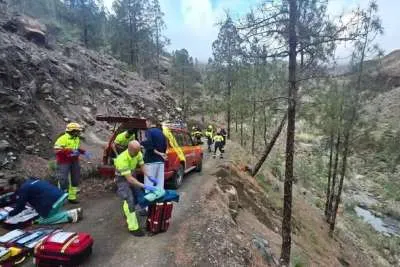Population in the South of Tenerife has grown by nearly 200,000 since 2000
- 21-10-2024
- Tenerife
- Canarian Weekly
- Photo Credit: Stock Image
The southern region of Tenerife has experienced a remarkable population boom since the year 2000, adding over 170,000 new residents, according to the latest data from the National Institute of Statistics (INE), as of January 1st, 2023. However, local municipalities suggest the actual figure may now exceed 190,000 residents since then, reflecting the ongoing growth.
Adeje, one of the major tourism hubs with the highest concentration of hotel accommodation on the island, has seen the most significant population growth. Its resident count surged from 14,007 at the start of the century to 50,167, marking an extraordinary increase of 258%, according to INE data.
Other southern municipalities also show sharp growth. San Miguel de Abona saw a 209% rise, going from 7,315 residents in 2000 to 22,606 today. Granadilla de Abona’s population grew by 170%, expanding from 20,323 to 54,942.
Meanwhile, Arona, the most populous municipality in the south of Tenerife, and the third largest on the island, saw a 121% increase from 38,416 to 85,249 residents. Candelaria rounds out the top five, with its population increasing by 116% to reach 28,694.
In total, the southern region now boasts a population of 317,000, according to INE figures.
Migration and Economic Drivers of Growth
Experts attribute this population surge in the south to strong migration trends driven by job opportunities in the tourism industry. However, the current housing crisis, with prohibitively high rental and purchase prices, and low availability, has recently slowed this trend.
The demographic profile in the South is generally younger compared to the northern and metropolitan areas, helping offset the overall decline in birth rates on the island.
Contrasting Trends in Santa Cruz and La Laguna
While the 12 southern municipalities, including Adeje, Arona, Granadilla de Abona, and others, have seen a near 120% population increase (adding 170,834 residents since 2000), Santa Cruz, the island’s capital, has experienced a population decline. The capital has lost 5,737 residents over the past two decades, a 2.74% drop, with the current population standing at 209,395, down from 215,132 in 2000.
In contrast, the neighbouring municipality of La Laguna has shown significant growth, adding 32,491 residents, a 25.6% increase, bringing its population from 126,543 to 159,034 today.
This population shift highlights the growing appeal of the southern part of Tenerife as a place of residence, driven largely by its economic opportunities and younger demographic profile.


























































